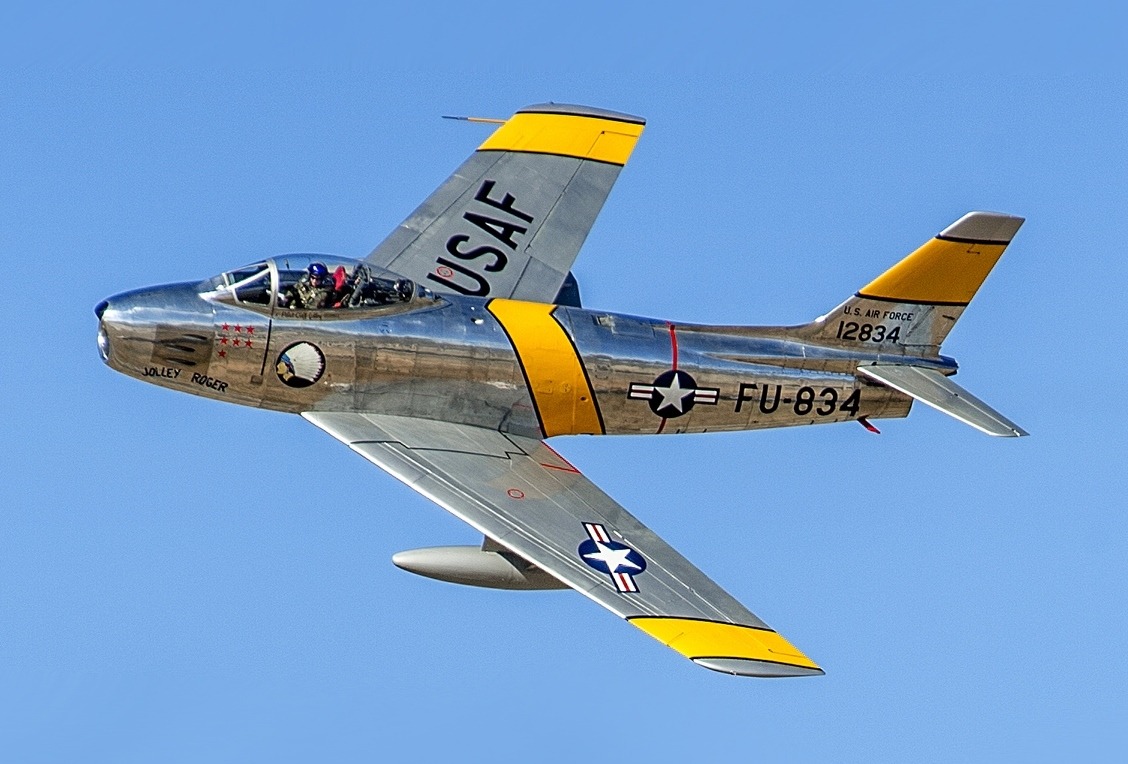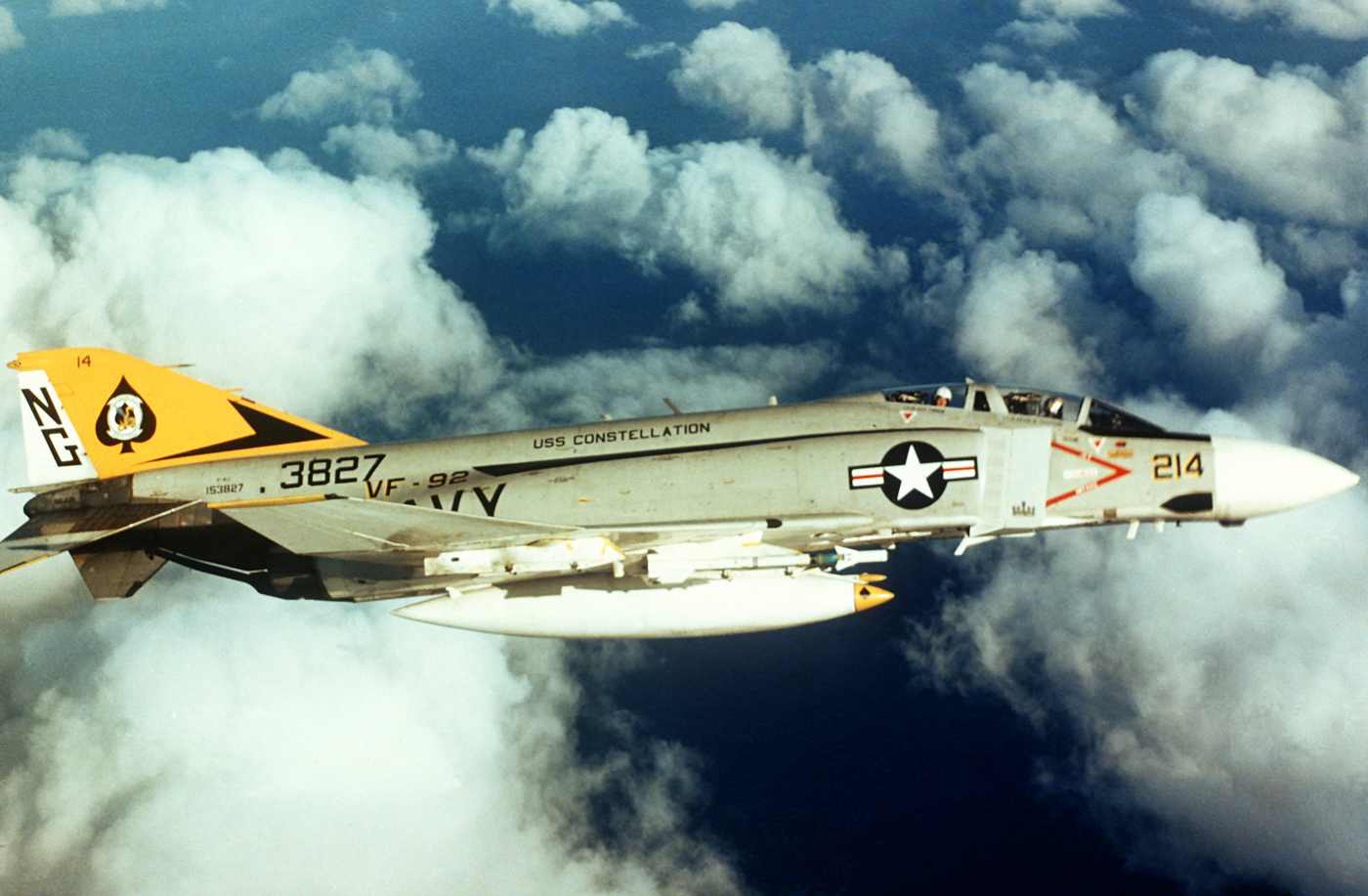Never-Ever In Aviation History! US Pilot ‘Pushed’ Another Aircraft In A Stunning Mid-Air Maneuver: A Recall From Korean War

‘Human’ wingmen and fighter pilots are inching towards obsolescence. The tales of fighter pilots’ dare-devilry and instincts shall be told for posterity. In one such instance, an American pilot pushed the F-86 aircraft of his wingman for 60 miles after the latter was hit by enemy fire.
The Hero of the story is Brig. Gen Robinson Risner. He was held captive and tortured in North Vietnam. He survived the ordeal to become a jet ace in the Korean War by claiming eight confirmed kills. But, one of their most courageous acts received only a passing reference in Risner’s book – “The Passing of the Night.”
Risner has volunteered for combat duty as a photo-recce pilot in Korea. Within three weeks, he found a way into the famous 4th Fighter Wing at Kimpo, which was flying the world’s best fighter of that time – the F-86.
China and the Soviet Union had started arming North Korea about four months after the Korean War broke out. The Soviet-built, swept-wing MiG-15 soon proved superior to the earlier models flown by American forces. The North American F-86 Sabre, the US response, proved to be the most effective fighter aircraft of its time.
By the time hostilities ceased in 1953, the USAF claimed that the F-86 had a 10:1 kill ratio over the MiG-15. While the claim may have been exaggerated, it is safe to say that the F-86 proved to be more than the MiG could handle.
Of the 40 pilots who achieved “Ace” status (a minimum of 5 kills), 39 flew the F-86. Records show that UN forces lost 78 Sabres during the war, while communist forces lost more than 650 aircraft.
A couple of weeks thereafter, he was in an aerial battle with the finest pilot he had ever gone up against. He escorted fighter-bombers in an attack on a chemical plant along the Yalu River when he encountered the enemy fighter pilot in a Mig-15.
They fought from 30,000 feet to the deck, the lowest possible altitude allowed. Risner managed to hit the Mig-15 and followed it as it crashed into the enemy territory across the Yalu River, down the runway of a Chinese airfield. During this time, Robbie’s wingman, Lt. Joe. Logan, stayed with him, giving him the cover.
As they climbed out of the adversary’s territory to fly across the Yalu, Logan’s F-86 was hit by a burst of flak. Fuel and hydraulic fluid came out of the belly of his aircraft. It seemed Logan needed to bail out in enemy territory. But Robbie Risner decided that he would fight it with all his might.
In his book, Risner elaborates on what transpired in those critical moments: “A typical fighter pilot thinks less about risk than about his objective.” In this scenario, Risner wanted to keep Joe Logan out of enemy hands. And Risner undertook what was probably one of the riskiest missions ever.
He decided to do something that had never been attempted before in the history of military aviation. He pushed the damaged F-86 to Cho Do Island, the US Air Force’s nearest rescue detachment located 60 miles to the south. Thereafter, Logan could punch out and be rescued immediately.
Logan was running out of fuel, and Risner asked him to shut down his engine. He gently inserted the upper lip of his air intake into the tailpipe of Logan’s F-86. “It stayed sort of locked there as long as we both maintained stable flight, but the turbulence created by Joe’s aircraft made stable flight for me very difficult. There was a point at which I was between the updraft and the downdraft. A change of a few inches ejected me either up or down,” Risner recalled later.
Every time Risner re-established contact between the battered nose of his F-86 and Logan’s aircraft, it was a potential disaster. The operation was made more dangerous by the film of hydraulic fluid and jet fuel from Logan’s F-86 that covered Risner’s windscreen and obscured his vision.
Risner managed to get Logan’s F-86 to Cho Do while maintaining a speed of 190 knots and staying out of the range of the enemy’s weapons. Logan ejected near the island. Despite Risner’s heroic efforts, Logan could not survive. He was a strong swimmer, but he got entangled in his chute lines and drowned before rescuers could join him.

Pardo’s Push Saves Crashing F-4
A feat similar to Risner was undertaken by Bob Pardo, who flew in Vietnam with the 8th Tactical Fighter Wing. On March 10, 1967, he and his navigator, First Lt. Steve Wayne, were on a mission to the North Vietnamese capital of Hanoi.
Both of them came under heavy anti-aircraft fire. The F-4 Phantom of Captain Aman, the lead of the mission, was hit by the enemy’s anti-aircraft gun, and his plane started to leak fuel.
Pardo’s aircraft was hit, too, and started leaking fuel. As they were flying back, they realized that Aman could not make it back to Laos because of leaking fuel.
If Aman decided to eject, the chances of them being rescued by friendly troops would be slim. If they fell into the enemy’s hands, a long, tortuous stay in PoW camp awaited them.
Pardo’s aircraft was hit, but not so badly. He had fuel to reach Laos, where a tanker would refuel, and he could reach his airbase. This would have left Aman and his navigator to an uncertain fate.
But Pardo was unwilling to leave them to fate and devised an unusual plan to take them to safety. Very gently, he pushed Aman’s F-4 with the nose of his F-4. Aman’s F-4 was losing speed and altitude quickly. After several attempts, he realized the constant push would take down both planes.
He then asked Aman to lower his tailhook, which the Phantoms had as they were designed as naval aircraft and required them for landing on board aircraft carriers. He pushed the tailhook with his windscreen. But there was a hiccup. Due to turbulence, the tailhook slipped off the windscreen every 15-30 seconds, and Pardo would have to reposition his plane.

Things were spiraling out of control fast as the left engine of Pardo’s plane caught fire, forcing him to shut it down. He restarted the engine, but it caught fire again. After pushing Aman’s plane for almost 88 miles, Pardo’s plane was also running out of fuel. Everyone decided to eject.
Aman and his navigator Houghton ejected, followed by Wayne and Pardo. They managed to evade the enemy and were rescued by helicopters 45 minutes later. Pardo had saved the day for four pilots that day. However, senior officials decided to press charges against him for losing an expensive plane.
However, the charges were dropped, and 20 years later, he and Steve Wayne were given Silver Star for what came to be known as Pardo’s Push.
- Questions and Answers
- Opinion
- Story/Motivational/Inspiring
- Technology
- Art
- Causes
- Crafts
- Dance
- Drinks
- Film/Movie
- Fitness
- Food
- Oyunlar
- Gardening
- Health
- Home
- Literature
- Music
- Networking
- Other
- Party
- Religion
- Shopping
- Sports
- Theater
- Wellness
- News
- Culture
- War machines and policy

